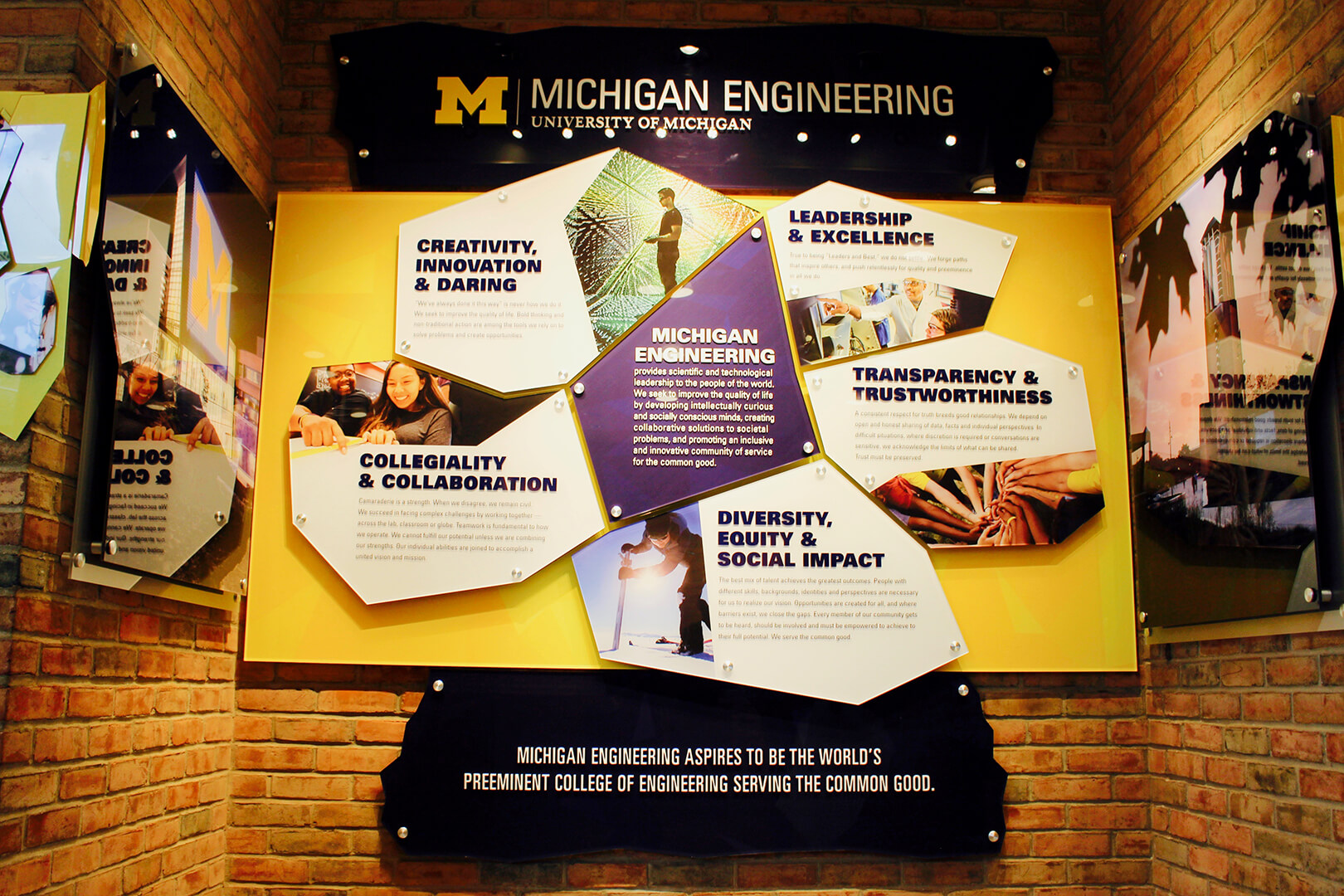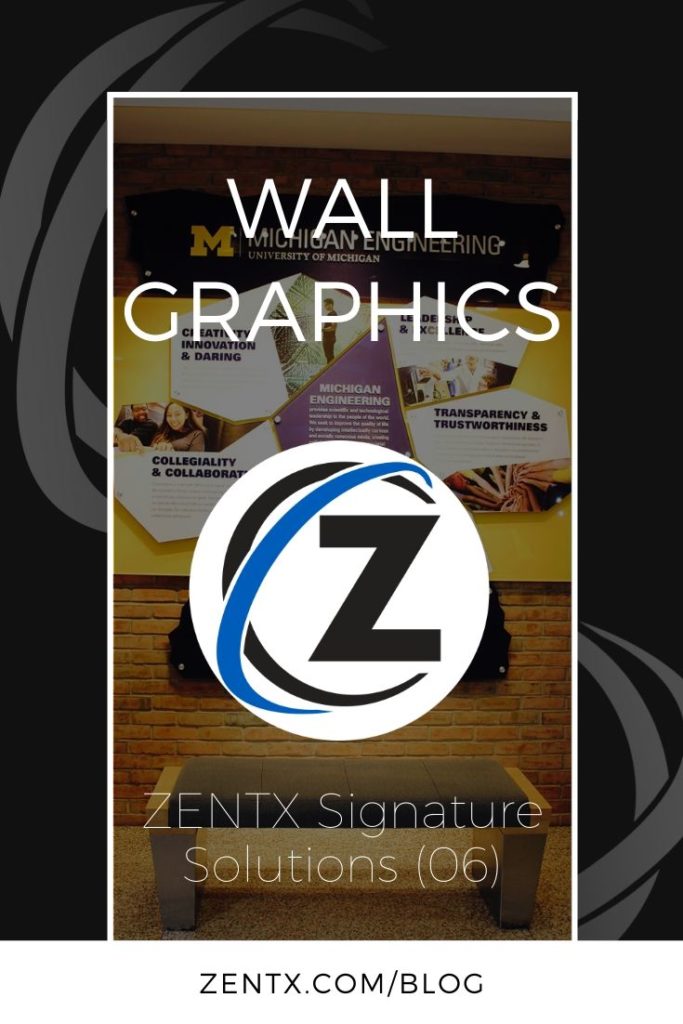
Quiz time: Which of the following sounds like a place you’d like to work?
• Bare, monochrome walls
• No clear vision or mission
• No plan to explain your business’ values to potential customers
• Colorful, tasteful decorations
• A vision everyone remembers
• A strategy to share your core values engagingly
We didn’t think it was a tricky question either. And no business wants to be like that first category, but knowing how to get to the second category can be hard. One strategy is surprisingly simple, though: meaningful wall graphics can address all of those issues.
You might think, “Just wall graphics — really?” Yes, really! It’s not like there’s anything wrong per se with decorating your hallways and meeting rooms with artwork or photographs. But a creative wall graphic makes the space much more distinctive, even unique. Plus, it lets you turn otherwise-unused space into a way of telling your company’s story.
Want some proof? Take a look at these examples from two ZENTX customers, Fullerton Tool and the University of Michigan’s College of Engineering.
A Fuller(ton) Awareness
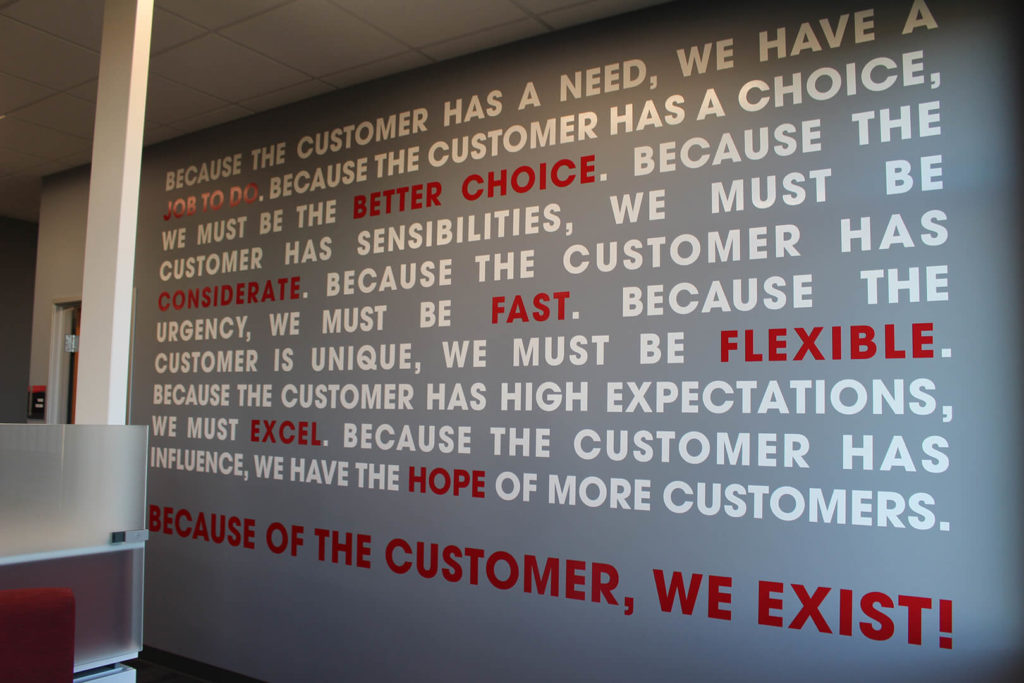
It’s not just potential customers who should be aware of your company’s core values. Employees also need to hear about them — after all, they’re the ones who put the values into practice. Besides, keeping those core values at the, well, core of your day-to-day work together can go a long way towards building camaraderie and a healthy company culture. Our clients at Fullerton sure embraced this principle.
Fullerton produces metal tools — drill bits, saw blades, and so on — for a variety of industries. But they don’t just manufacture the parts; they also emphasize excellent customer service after the sale. That’s probably part of why their mission statement doesn’t even mention tools. Instead, it talks about how the customers’ needs dictate Fullerton’s standards for themselves.
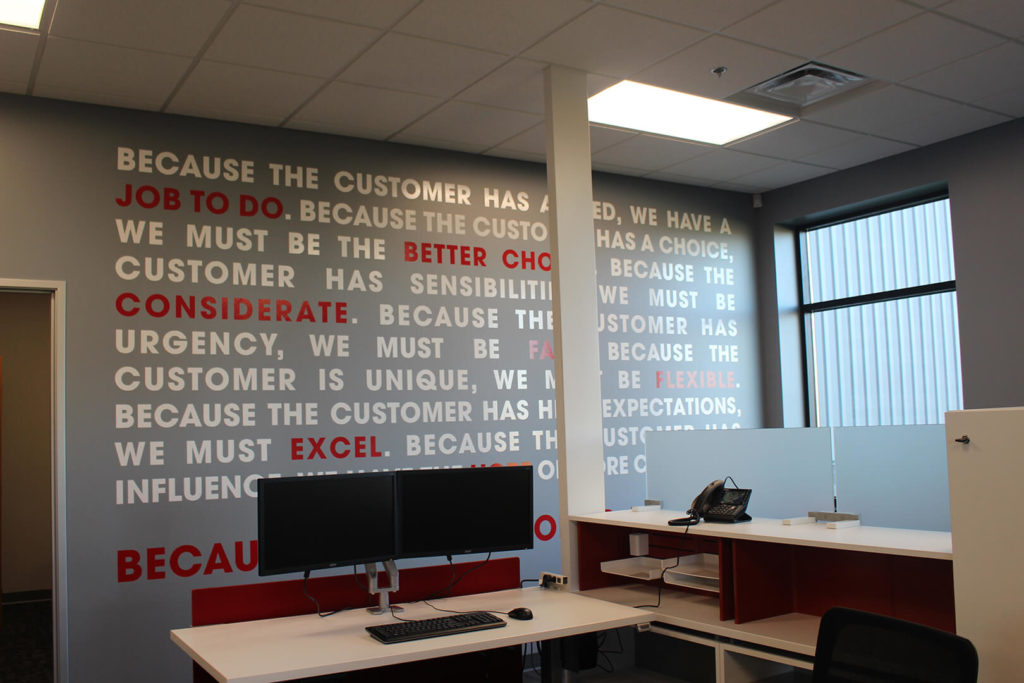
Using colored vinyl, ZENTX’s craftsmen cut out the mission statement’s words and attached them to a wall. Most of the words are in white, but the particularly-key ones are in red. Besides making them stand out, that gave us the chance to weave Fullerton’s signature red color into the decor.
Because this wall graphic is located in a shared office, it constantly raises employees’ awareness of the mission statement. We also created panels with inspirational quotes related to Fullerton’s core values. For example, one reminds viewers that “people don’t care about how much you know until they know how much you care,” connecting Theodore Roosevelt’s words with Fullerton’s core value of caring about customers, community, and each other.
An Invitation to Join
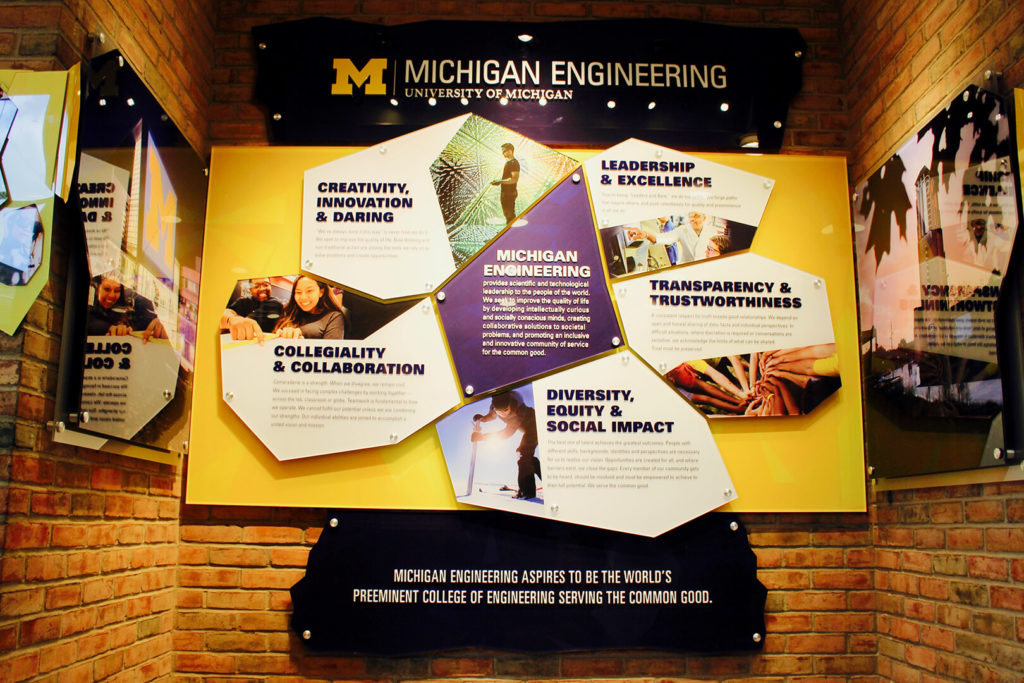
Our task for U of M’s College of Engineering was slightly different. Their wall graphics needed to communicate the department’s core values not just to employees and current students, but to prospective students.
We started by making the graphics eye-catching. The bold, high-contrast colors and bright photos are a good start, and the unusual shapes of each panel add to that. The panels are also dimensional, creating depth and shadows that make the design more visually complex.

The core values themselves show up front and center. That main purple panel contains a statement proclaiming the College of Engineering’s intention to “improve the quality of life” for “the people of the world.” Doesn’t get much more ambitious than that, right? It’s the kind of lofty, quest-like goal that inspires others to join you in pursuing it.
Five other panels fan out around that main mission statement, spelling out the values that are central to the College of Engineering’s pursuit of that goal. Each one lists the value plain and simple: “Collegiality & Collaboration,” for example, or “Creativity, Innovation & Daring.” We made sure the titles are easily visible from a distance, to draw people in. Once folks walk closer, they’ll see a fuller description of what each value means to the College of Engineering’s members.
In the end, of course, an organization’s core values themselves are what’s most important, not the graphic itself. Actually, scratch that — having the core values get lived out is what’s most important. Creating a beautiful, polished presentation for the core values is simply one way to increase the chances of people stopping to learn about them. And that makes it that much more likely they’ll remember the core values and adopt them as their own.
